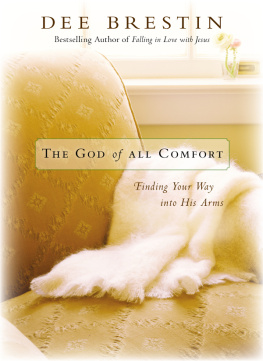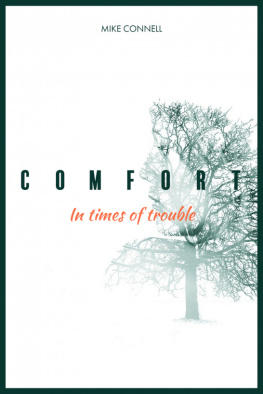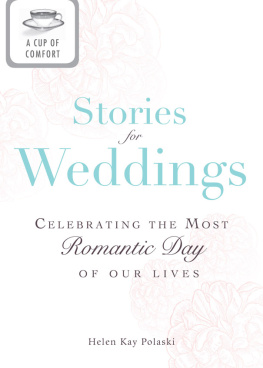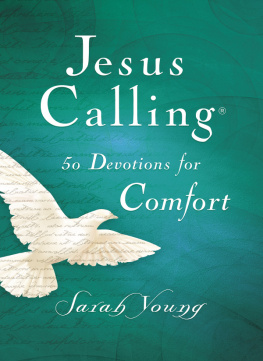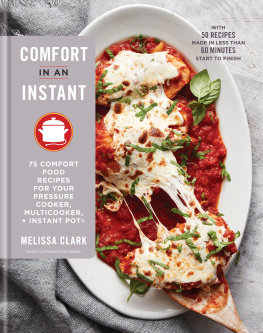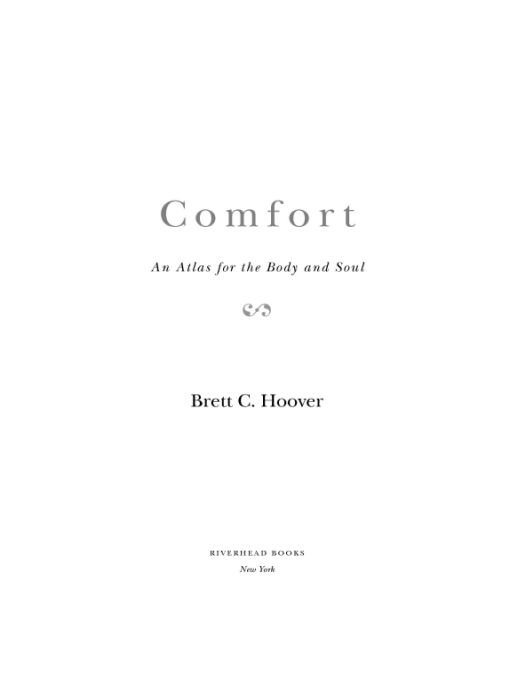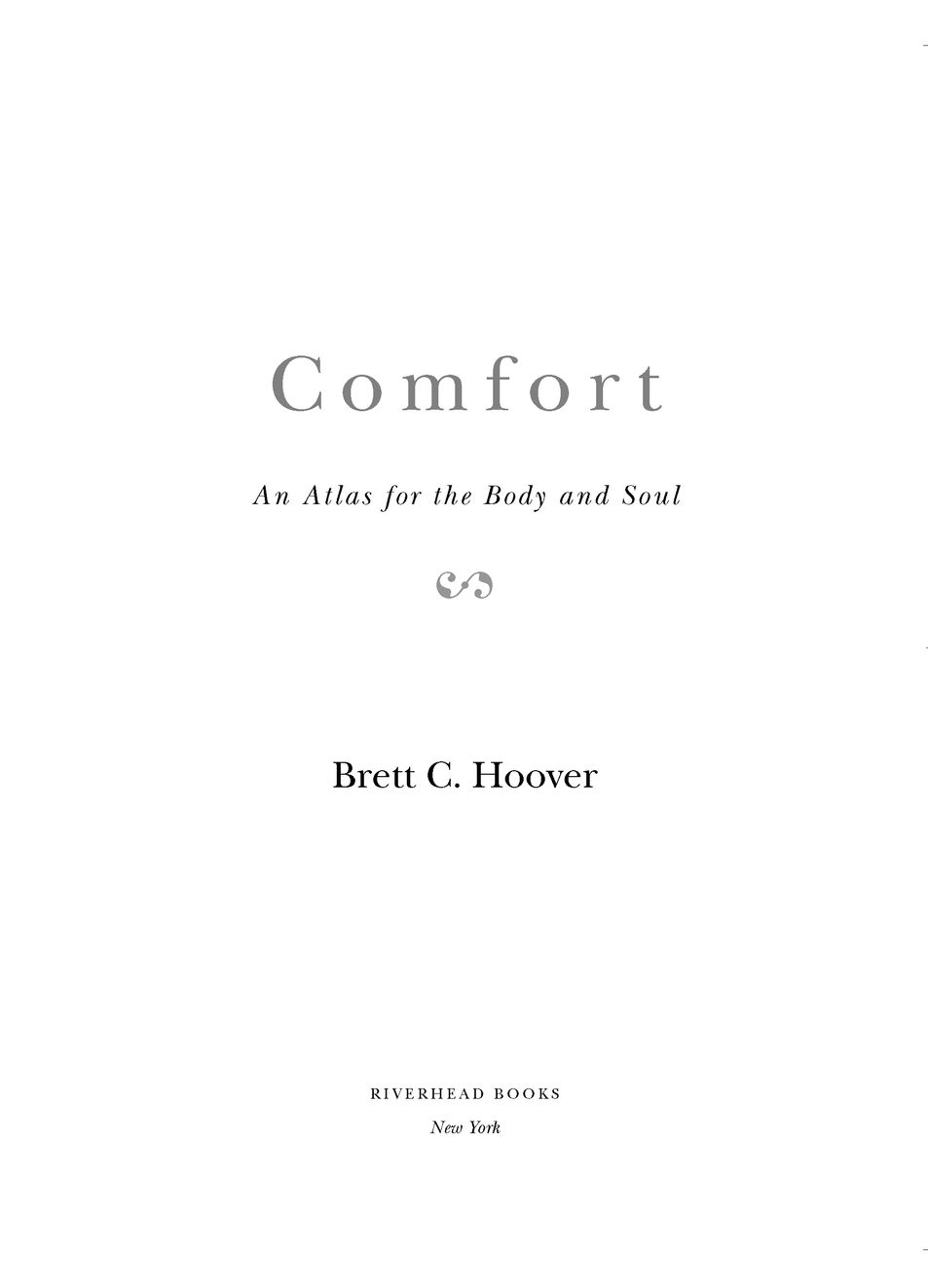Table of Contents
Acknowledgments
My gratitude goes first to Tony Marchini, who, in his quiet, behind-the-scenes way, cleared a path for this book. He led me to Joy Harris, my agent, who took a chance on something she felt people needed to hear. Then there was editor Jake Morrissey, who with great patience and humor helped turned this chaos into creation. Gratefully I acknowledge the generosity of people who made valuable contributions along the way:
My parents, Jim and Karen; my sister, Tiffany; her husband, Denis; my brother, Blair, and his wife, Tina; my nephew, Chase; my beloved friends James and Azita; good priest friends Ken and Gilbert; and a host of others whose advice and stories appear in these pages.
Azitas kind and humorous nurse friends Carol and Heather, with whom I discussed comfort for hours in a San Francisco bar.
Tiffanys enthusiastic students and coworkers, who gathered at a fitness club in Walnut Creek, California.
My friend Ikes buddies, who gathered to talk to me at his home in Northern California.
Tracey Smith of the British downshifting movement.
The extremely smart women of Tuesday Afternoon Theology at the university parish in Berkeley, California, who gave feedback on the book.
I thank you all. I dedicate the words that follow to Monica, who probably would never expect it.
Part One
The Roots of Comfort
But... to plant an orchard, to enlarge a dwelling, to be always making life more comfortable and convenient, to avoid trouble, and to satisfy the smallest want without effort and almost without cost. These are small objects, but the soul clings to them.
ALEXIS DE TOCQUEVILLE
Chapter One
The Human Story of Comfort
For everything there is a season, and a time for every matter under heaven.
ECCLESIASTES 3:1, NRSV
In the Beginning
In the beginning, there was comfort.
You and I and everyone we know started life suspended in the warmth of a mothers womb. For most of us, it was a homeostatic Jacuzzi paradise, everything safe and peaceful. Nourishment and oxygen arrived dependably via umbilical cord. We hovered in the cozy amniotic waters, balanced, temperature-controlled, cushioned by a mothers flesh against the bumps and scrapes of the outside world. No bright lights, all loud ambient noise filtered down. Nothing hurt; nothing made us afraid. Primordial comfort.
It could not last, and the hour arrived when the complicated world made its claim on us. Birth came as an interruption. We emerged to a difficult world through that messy, painful, joyful, conehead-producing event.
That, to a large extent, is the human story of comfort: stretches of tranquillity interrupted by periods of struggle. Rest and run, play and work, weekend and workday, celebration and crisisour lives are built on such cycles. We ride back and forth from comfort to discomfort, even from those very first moments. We learn that life is both beloved ease and uncomfortable challenge, often in succession, sometimes shifting without warning. Always both.
We wish it were not so.
I was raised in the suburbs of Southern California. To Americans, suburbs function as the archetypal symbol of comfort, a middle-class nirvana for shelter and security. This was the way I experienced them in the 1970s. In 1971, when I was but a toddler, my parents packed up their worldly goods from a two-bedroom apartment and bought a house in a relatively recent development on the improbably named Flintstone Lane. A short, wide street in the middle of a large suburban housing tract, Flintstone Lane had a womblike quality to it. Major traffic was confined to other, major thoroughfares outside the housing tract. The suburb itself got chronically rated as one of the safest cities of its size in the country. While I lived there, pleasant single-family homes all seemed to produce children near my age. Especially in those years before my siblings and I began school, everything felt idyllic and cozy. We would slip through the gap in the grape-stake fence to play with the kids next door; the neighborhood boys would set up ever-higher bicycle ramps on the street in front of our houses; the girls invented secret clubs; we built forts of blankets and pillows; my younger brother and I engaged in gargantuan construction projects of LEGOs. Each night ended with my folks switching on Walter Cronkite, who summarized the days events, telling us, And thats the way it is, reassuring us with his grandfatherly face and voice.
In my earliest years I looked upon such coziness and security as normal. But even then I saw signs that safety and comfort had limits. My father told us stories of how he had grown up poor in the Midwest, and how his father drank too much. Our county suddenly fielded thousands of refugees from a war in Southeast Asia that ended before I could fathom what had happened. The baffling, complicated world slowly penetrated our sheltered existence despite the social and economic fortifications the suburbs provided. At six I went to Catholic school and found myself lined up at recess with the other boys to play kickball, presided over by bullying monitors from the older grades. I was engulfed in the strict hierarchy of boys, a world of athletic and fighting braggadocio I did not understand. Blacktop mockery, recess wrestling matches, and forced participation in sports became part of my world, andsheltered child that I wasI marveled at how uncomfortable that world could get.
Experience marks and teaches us. In the end, I learned as much from these struggles as from the cozy foundation. As I look back now, that combination of comfort and discomfort, side by side from the beginning, seems eminently normal, a perfectly adequate lesson in how the universe does business. Its what everyone needs to know. But back then I did not want to believe that at all.
Even as adults, during comfortable times, we forget how normal it is to have both comfort and discomfort in our lives. Optimism takes hold of us. We imagine that carefree days could last. We could somehow protect ourselves from the disasters and problems that afflict other people (with secret suspicions that they have brought it on themselves). The real shock of recognition comes when the normality of discomfort intrudes upon that cozy little world, when we suddenly uncover a quotidian world of distress or unease hiding in our midst. Once I attended a memorial service in New York City for the husband of an elderly woman who lived in my neighborhood. They had been married many decades, and I reflected on how comfortable two people must grow with each other over the years and what an example such a commitment is to younger people like me. As the evening wore on, I approached the woman and very softly and solemnly offered my condolences. She took one look at me, frowned, and said, Son of a bitch, I never loved him. Im glad hes dead.
Its so easy for discomfort to come across like someone elses problem rather than part of the real human story of comfort. This is why we need to know the truth about comfort and discomfort, about both the human need for comfort and the human value of the challenges and ordeals that occur in its absence.
Catholic Comfort
I am by profession a priest, privileged to have spent years listening to and learning from the ordinary struggles of many good people. I trained for that work spending several years studying my own spiritual tradition, gaining a good background in other faith traditions, developing a general sense of the human processes of psychological and spiritual growth. Later I attempted to prove my mettle as an interdisciplinary scholar, pursuing a Ph.D. in theology and culture.


